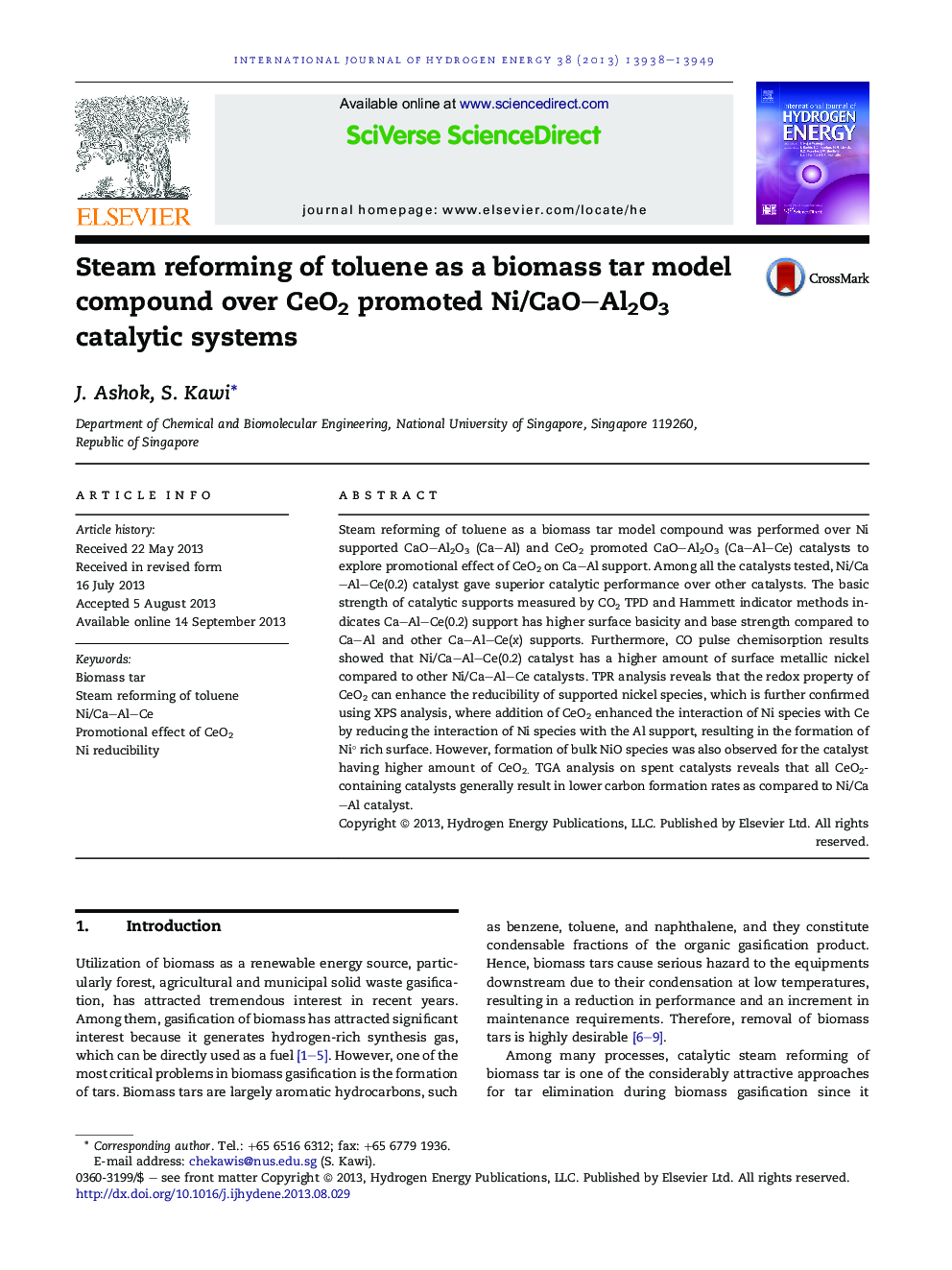| کد مقاله | کد نشریه | سال انتشار | مقاله انگلیسی | نسخه تمام متن |
|---|---|---|---|---|
| 1273064 | 1497513 | 2013 | 12 صفحه PDF | دانلود رایگان |

• Steam reforming of toluene over CeO2-promoted Ni/Ca–Al supported catalysts.
• Ni/Ca–Al–Ce(0.2) gave superior catalytic performance over others.
• Ni/Ca–Al–Ce(0.2) catalyst has higher basicity and amount of surface Ni species.
• Promotional effect of CeO2 to enhance the reducibility of surface Ni species.
• All Ni/Ca–Al–Ce catalysts have less carbon deposition than Ni/Ca–Al catalyst.
Steam reforming of toluene as a biomass tar model compound was performed over Ni supported CaO–Al2O3 (Ca–Al) and CeO2 promoted CaO–Al2O3 (Ca–Al–Ce) catalysts to explore promotional effect of CeO2 on Ca–Al support. Among all the catalysts tested, Ni/Ca–Al–Ce(0.2) catalyst gave superior catalytic performance over other catalysts. The basic strength of catalytic supports measured by CO2 TPD and Hammett indicator methods indicates Ca–Al–Ce(0.2) support has higher surface basicity and base strength compared to Ca–Al and other Ca–Al–Ce(x) supports. Furthermore, CO pulse chemisorption results showed that Ni/Ca–Al–Ce(0.2) catalyst has a higher amount of surface metallic nickel compared to other Ni/Ca–Al–Ce catalysts. TPR analysis reveals that the redox property of CeO2 can enhance the reducibility of supported nickel species, which is further confirmed using XPS analysis, where addition of CeO2 enhanced the interaction of Ni species with Ce by reducing the interaction of Ni species with the Al support, resulting in the formation of Ni° rich surface. However, formation of bulk NiO species was also observed for the catalyst having higher amount of CeO2. TGA analysis on spent catalysts reveals that all CeO2-containing catalysts generally result in lower carbon formation rates as compared to Ni/Ca–Al catalyst.
Figure optionsDownload as PowerPoint slide
Journal: International Journal of Hydrogen Energy - Volume 38, Issue 32, 25 October 2013, Pages 13938–13949